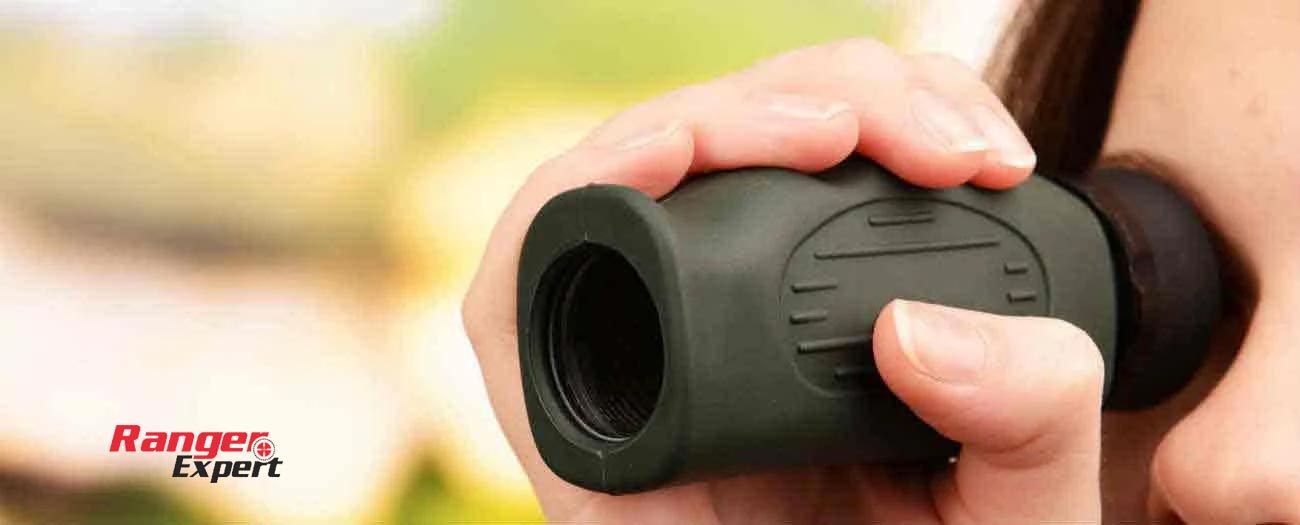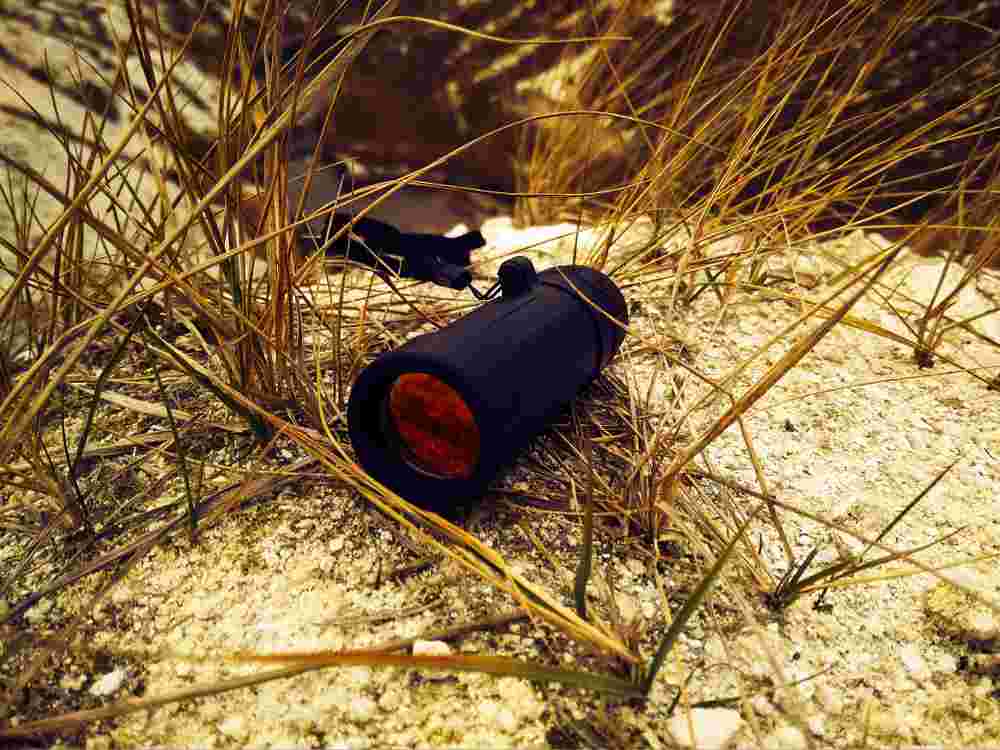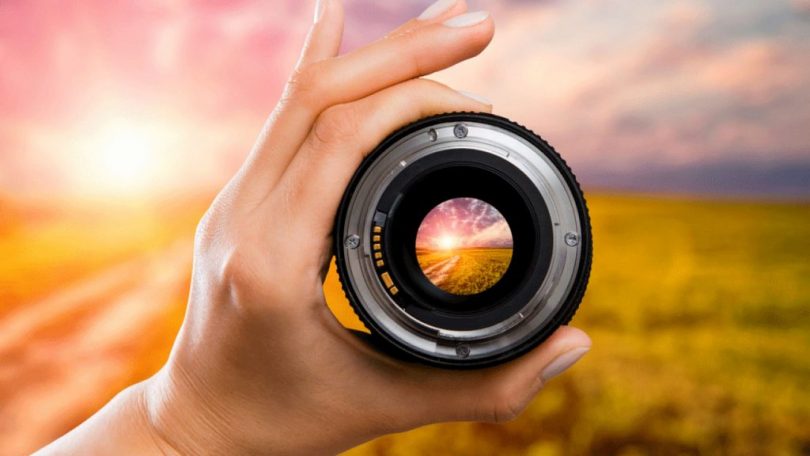The monoculars, just like binoculars and scoping lenses, are eye lenses that can be used for many outdoor purposes like sightseeing and hiking.
Monocular comes in different sizes and can be used for different purposes. Regardless of whatever purpose it is that you are getting monoculars, knowing their specifications is very necessary.
To buy the best monoculars for your favorite outdoor activities, you’ll have to focus on magnification power, objective lens diameter, Field of view, and lens coating. For a more personalized experience, you should also consider the eye relief and focus type. What’ll work best for you will depend on what you intend to do with your monocular.
This article will explain how to choose a monocular for different purposes. We’ll talk about the monocular buying guide, magnification, anatomy, and the best uses so that you can choose the perfect one for your next adventure.
Without any further ado, let’s zoom right in!
How To Choose a Monocular? In-depth Guide

With each of these specifications already highlighted above, let us look at them one after the other and take note of them when getting a monocular.
1. Magnification
Regardless of the purpose, any monocular’s quality and excellence are identifiable by two major numbers, including the magnification number.
So, what do the numbers on a monocular mean? Here’s a simplified overview of the magnification number:
It helps you to know what the size of an object will be when it is viewed from the lens of the monocular. The magnification power of the monocular will aid your knowledge of the sight of objects to be viewed.
The magnification power can be measured based on the specification of the monocular.
So a monocular that has a specification of 10X40 in measurement, when used to view an object that is 10 meters away, will have the object appear like it is a meter away. Remember,
- A short lens with a better magnification power is always the best
- The higher the monocular magnification power, the further you can see
2. Objective Lens Diameter
The objective lens diameter is the second number we can see in a monocular specification. This lens can be found in the front of the monocular.
It helps to gather light that aids in seeing an image and determines how bright such an image will appear on sight.
The diameter of the objective lens helps you to be able to tell the amount of light that can be gathered and how bright an image can be viewed when using a monocular. Here,
- Larger lenses contribute to the increase in the size and weight of the monocular.
- The amount of light the lens can gather depends on the diameter of the lens.
- It is far from the eyes but closer to the object being observed.
3. Field of View (FoV)
The field of view is an area located on top of the eyepiece. It is measured in width by feet and moves around a particular range or degree size.
This makes the field of view of two major types, the linear field of view and the angular field of view. Keep in mind,
- If you can calculate the size of a Monocular’s magnification power, you can use it to measure its field of view.
- Go for a lens with a broad field of view, especially when your monoculars are for sightseeing
4. Eye Relief
The next thing we’re talking about is eye relief, meaning the distance between the eye and the eyepiece.
With eye relief, you can view the whole FOV through the monocular lens. It also provides comfort. The eye relief is especially useful if you wear glasses.
The more time you spend putting on monoculars, the more you will be able to understand eye relief and the distance between your eyes and the monocular.
- The higher the magnification power of a monocular, the higher the amount of eye relief needed
- Monoculars with lesser magnification power need just little eye relief while in use.
5. Close Focus
The close focus of the monocular is also a factor to be considered. This determines whether the focus will aid short-sight or long-sight.
Monoculars, especially those used for sightseeing, need to have their close focus specified to fit your eye defect type.
- You will need a monocular with a far focus if you are short-sighted and cannot see objects that lie far off.
- For one who is short-sighted, you will need a monocular with a closer focus.
6. Lens Coating
The lens coating is the material makeup of the lens that determines the thickness of the lens. There’re different coating options designed for different purposes.
For sightseeing, it is best to get a lens with a solid coating so that the lens can stay firm and in place. When the monocular is for other fun purposes, you can opt for a lens with a lesser coating.
What Is a Good Monocular?
With all the specifications to look out for, how do you choose a high definition monocular that fits your needs and budget?
Remember, the performance and power of a monocular are based on its use. What is a good monocular to one person might not necessarily be a good fit to another.
A great monocular should have a specific objective lens diameter, magnification power, eye relief, and close focus that’ll fit your specific purpose.
Most importantly, all of this should come in the sizes you desire.
The use of quality materials is another prerequisite of a good monocular.
Durability and reliability are two factors that make a good monocular. You won’t want to get a monocular that goes bad after a while.
Your Monocular Should Be Compact and Versatile.

A compact monocular has all the right features in place and in the right sizes. When getting a monocular, make sure it fits well in your case/purse and stands well in terms of specifications and features.
In addition, you wouldn’t love to use another device for night-time purposes, provided that you intend to undertake some nocturnal tactical activities.
A night vision monocular with all desirable features can be a great pick.
A Waterproof Monocular Is an Outstanding Choice.
Besides being compact, a monocular that is waterproof is a good choice. The waterproof features allow you to take the monocular anywhere and do everything with it without fearing water damage.
If you want to buy a new monocular, these specifications explained can help you be more thorough with your analysis and make an informed purchasing decision.
Make sure you find out why you need the monocular first. This is important because even the best monocular for long distance won’t do you any good if it has durability or usability issues.
So, pay attention to the specifications and be sure they will serve your unique purpose.
Best Uses for a Monocular
Now that you have a solid idea of how to choose a monocular, let’s dive deep into the different uses of a monocular.
Hunting
The primary use of a monocular in the USA is hunting. There are a lot of hunters out there who prefer using a monocular because it gives them a better-focusing ability, and they are super easy to carry around.
However, some hunters also prefer a bilocular, and some others prefer a spotting scope, which is essentially a larger monocular!
When it comes to hunting, your personal preference will matter the most than what others tell you to do. A monocular will provide a sharp, two-dimensional image of the target; alongside impeccable transportability.
Monoculars are easy to work with as they only require one hand to operate, allowing you to prepare your weapon for the best shot in the other hand.
Birdwatching
Birdwatching or wildlife observation is another one of the most popular hobbies across the country.
In 2022, a record 15.23M people went birdwatching, and with the increase in people’s interest in birdwatching and other wildlife observation activities, the demand for good quality monoculars is also skyrocketing!
If you have to carry many things around on your outdoor trip and are concerned about the portability issue, a monocular is a great choice. Their small and compact nature helps bird watchers to get similar results to a pair of binoculars but at a fraction of the trouble!
Hiking
Hiking and camping are two popular hobbies people also use a monocular for. You can scout your route, check out the best scenarios, and search for the best camping sight using a monocular.
Not only that, a monocular lets you do all that without adding much weight to your backpack, making your journey a little more comfortable and fun.
Whether you go camping, snowshoeing, hiking, sailing, or canoeing, having a monocular will increase your safety and fun. Basically, any outdoor trips where you need to look ahead will become much more enjoyable with a monocular in your hand.
Sports and Other Events
Many people also use monoculars in various sports and entertainment events. This is most useful when you’re far from the action but want to make sure you don’t miss any crucial moments.
For example, there are so many people in racetracks, stadiums, theaters, or concerts that it takes a lot of work (and luck!) to secure a good spot. If you bring a monocular, that won’t be an issue anymore.
No matter where you’re seated, a monocular will help you enjoy the event you desire without frustrating over getting a good viewpoint.
Astronomy
Some of you might argue that why use a monocular in astronomy when you can use a telescope, right? But hear me out, okay?
Usually, a monocular can’t help you see deeper into the cosmos. However, for general-purpose stargazing, a monocular can work really well and at a fraction of what a purpose-built telescope may cost!.
If you’re looking for a great supplemental tool for occasional stargazing, a monocular can work just fine.
Vision Problems
Using a pair of heavy binoculars will not only strain your hands and eyes but can also introduce issues like headaches and discomfort, primarily when you use them for an extended period.
On the other hand, a monocular lets you have a quick peak without any discomfort, even if you use it over and over.
Not only that but monoculars can also be used in everyday life. Particularly people with vision problems might get benefits from using a monocular.
Final Thoughts
And with that, we’re at the end of our discussion today. Now you know how to choose a monocular and where to use it for getting the best result.
We’ve provided a general overview of the uses of a monocular, and shared tips to choose the best monocular for you. I hope that the information we provided will help you to make an informed buying decision. Thanks for reading this far. Happy Watching!
FAQs
What Is the Best Magnification for a Monocular?
Most monoculars feature 6X-10X. For most monocular applications like birdwatching, hunting, and hiking, that is enough. However, if you want a better magnification range, you can opt for larger magnification lenses. Keep in mind that the larger the magnification, the harder it’ll be to get a steady picture.
What Does 10×25 Monocular Mean?
The first, number (10) indicates the magnification power of the monocular. 10X refers to a ten-times magnified zoom. That means if you’re looking at something that is 10 yards apart from you, it’ll feel like the object is just 1 yard away through the monocular.
The latter represents the diameter of the objective lens. The larger the number, the more light is going to hit your eyes, producing a sharper, more vivid image. To know more, follow our binocular/monocular magnification explained article.
Is 10×36 better than 8×36?
Here, both objective lenses have the same diameter. The only difference here is the magnification power. The first one offers a 10X zoom capability whereas the latter can provide 8 times magnification.








Leave a Comment